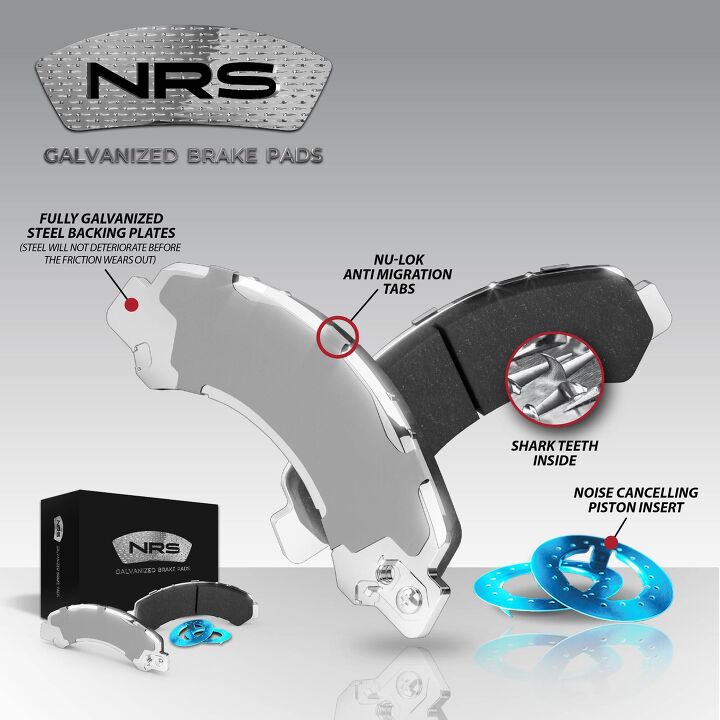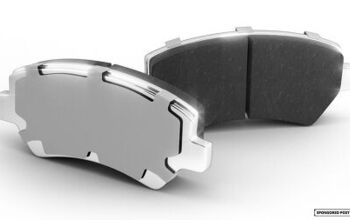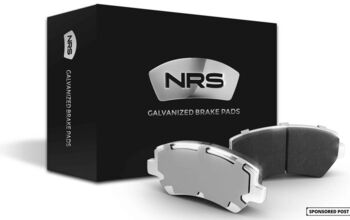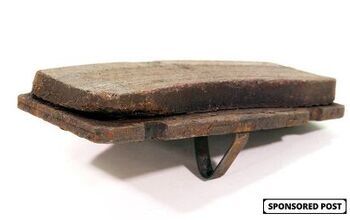How Long Do Brake Pads Last?
Brake pads are the hardest working and most important part in your car’s braking system. So how long can you expect a set to last?
Like most other parts of your car, truck or crossover, brakes wear down over time. In the case of brake pads, every press of the brake pedal puts them into contact with the brake disc. This generates heat and vibration, and grinds a tiny amount of friction material off, slowing your car or bringing it to a stop.
That’s regular use, but brake pads share another similarity with other consumables on your car: the environment’s impact on their useable life. All other things being equal, someone living in a warm, dry, flat part of the country will see slower brake pad wear than drivers in somewhere like Michigan.
We’ve partnered with the experts at NRS Brakes to get all the answers on brake pad life: from brake pad construction, to weather, to how many miles you can expect between sets, here’s everything you need to know about how long brake pads last.
Brake Pad Material
Brake pads come in a variety of materials. Organic pads use a composite material made from non-metallic fibers. While this offers great stopping power, the material has a much shorter lifespan than other brake pads. Ceramic or synthetic pads are stronger, longer lasting, and operate within a wider temperature range. They also cost much more than other pad types. Semi-metallic is the most common brake pad type found on modern cars, considering it offers a good mix of braking power, cost, and longevity.
At the Mercy of the Elements
Weather plays a major role in the lifespan of brake pads. Know why nice cars hibernate in a garage during the winter? Their owners aren’t tucking them away just because they’d be harder to drive in the snow. They’re storing those cars because the stuff we do to roads in the winter in order to make them driveable is far less friendly to our cars’ bodies and components.
Road salt will accelerate the wear of metal parts under your car, including the brake pads. So can road grime and slush, which salt creates to fight off snow build-up.
Related: How to Check Brake Pads
Most of us can’t just opt out of driving during winter however. Which is why it’s good to pay extra attention for any warning signs your brake pads send you in the colder months.
Signs Your Brake Pads Are Worn
If your brake pads create squealing or screeching noises every time you apply the brakes—even after they’re sufficiently warmed up—then it might be time for a new set. If the noise progresses to an angrier, grinding sound, get your car into the shop immediately: that could signify a complete lack of friction pad material, where the metal backing plate is now making contact with the brake disc. This not only is dangerous, significantly extending brake distances, but it will ruin your discs, making the repairs even costlier.
Related: Brake Replacement: Here’s How To Change Your Brake Pads
Most offshore-manufactured, cheaper brake pad options available use an adhesive to bond the pad material to the steel backing plate, making it susceptible to breakdown from heat transfer. In cases of heavy brake use, this adhesive can completely fail, causing large chunks of the material to crumble off. This is called rust-jacking or delamination.
Why Galvanized Brake Pads
NRS Brakes makes galvanized brake pads that don’t use failure-prone adhesives like those other pads, thus eliminating the possibility of delamination, resulting in longer-lasting pads. These galvanized brake pads aren’t shiny just to be eye-catching either. That metal backing plate is treated to a process called galvanization, which coats the metal in rust-resistant zinc. This prevents corrosion, further extending the brake pad’s life. Most painted brake pads break down due to rust before they have a chance to wear down the friction pad material’s full life.
How does the pad attach to the plate then, if not through adhesive? NRS Brakes uses the company’s patented SHARK-Metal Technology here, which mechanically bonds pad and plate via dozens of metallic grooves. This approach not only decreases braking noise and stopping distances, it also helps solve two leading causes of premature brake system failure: corrosion and rust-jacking.
How Long Will My Brake Pads Last?
As you can see, there are a lot of factors to consider when asking this question. The type of braking system your car uses is one. How you drive, and whether you use a manual transmission or automatic is another. We also can’t forget simple physics: a heavier crossover will put more strain on its braking system than a lighter car during the same emergency braking situation. One thing we know for sure is that a rusted brake pad will start to cause noise, exhibit uneven wear and possibly break down before the typical life of the brake pad.
The general consensus is that a set of brake pads can last anywhere from 15,000 to 60,000 miles (or 24,000 to 100,000 km). That said, using a set like NRS Brakes’ galvanized brake pads—and giving your brakes a fighting chance against corrosion—can help your car hit the higher end of that range. They’re known as the world’s longest lasting brake pads for good reason.
For more on NRS Brakes and its galvanized brake pads, click here.
More by AutoGuide.com Staff

































Comments
Join the conversation